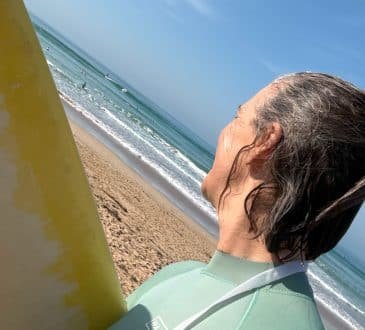Becoming a Trusted Thinking Partner Starts with Asking Better Questions

When I was choosing a pediatrician for my children, all the lawyers in my office pointed me to the same doctor they all saw for their kids. When asked what made this one doctor incredible, their answers were consistent and clear:
“He is even-keeled and calm.”
“He knows when to raise the worry flag and when to help you take a deep breath.”
“He asks good questions, and his expertise results in really good care for your kids.”
What they were saying was: You can trust this doctor to be your pediatric thinking partner. I called the office right away and was added to his patient roster. He remained our trusted partner for years until, unfortunately (for us), he retired.
This is the same approach business leaders need to take to become a trusted thinking partner for their clients:
- Stay calm when the client is frantic.
- Raise the worry flag when necessary.
- Help clients take a deep breath and sit with them until they can find calm.
- Ask better questions to guide your advice to clients or to navigate the strategic choices they’re considering.
- Use your expertise to advance your clients’ goals and solve their problems (not just show them off for everyone to see).
Simply being curious about your clients is arguably the most effective strategy for building strong client relationships, but it’s also often the most misunderstood. The reason for this is that it is often over-simplified as merely “getting to know” clients. But “getting to know” feels amorphous because it ignores the little problem of knowing what to ask them about.
Building a Better Question
When I said you need to get curious about your clients and what’s going on with them, your mind may have jumped to simple questions like:
- “What are you working on?”
- “What are you worried about?”
- “What keeps you up at night?”
- “How do you anticipate growing next year?”
While well-intentioned, these questions often beget unhelpful responses:
Question: “What are you working on?”
Answer: “Cleaning out my emails.”
Question: “What are you worried about?”
Answer: “My team.”
Question: “How do you anticipate growing next year?”
Answer: “We are just trying to stay afloat.”
However, these dead ends can be avoided with some strategic stage-setting. A smidge of context can elicit greater direction and focus on clients’ responses. For example: I’m working on a client solution intended to help our growth plan for next year, and I’m wondering: which part of it often causes the most problems for you and your team?
When you ask which part of the topic clients are concerned about, you give them an opening to engage with you and help them understand the point of your question. It lets you communicate your knowledge and expertise without making a big show of it. This is a trust-builder for clients wanting to be sure that the important issues will rise to the top with you.
Next, you might continue with another question, such as: “How are you and your team talking about [update/concept/common question]?”
Now you have asked one good question that can progress the conversation and left the door open to learn more about their priorities (rather than assuming that you know what they are or should be). This is one more step toward infusing trust into the relationship.
Good questions are also more efficient. When you build out a program, work product, or business model without validating that it will be valuable for your ideal clients, you deploy a “fingers-crossed” strategy. This is not the way to build the strong client relationships you desire. You also do not need too many questions.
You Just Need One Question
Much of the focus of business development is on getting in front of clients at networking events or angling to get the “right” people at the table for a business dinner. Yet while getting the work is the ultimate goal, often little time is spent on the simple but crucial everyday connection points.
A strategic question also allows you to take on the role of the researcher through your conversations by asking a handful of clients, colleagues, or referral partners the same question and comparing answers to pick up on common themes.
There’s incredible value to be gained from this: the client’s word choices and the energy they bring to the topic signal their perspective and approach; these are cues you need to pay attention to. If you miss this opportunity, the client will assume (correctly, in this instance) that you weren’t paying attention or don’t care. This runs the risk of breaking your trusted relationship with the client and forcing you to move into repair mode (a space that isn’t impossible to escape but is often not fun to be in).
The cool thing about this strategy is that there are endless possibilities and opportunities to forge connections and conversations with clients and potential clients. In addition, if a question isn’t working, change it. If you aren’t getting the answers you were expecting, consider the clients and your approach to the topic to see which needs to change first.
Written by Deb Feder. Excerpted and adapted from Tell Me More: Building Trusted Client Relationships through Everyday Interactions by Deb Feder (Grammar Factory, 2024).
Have you read?
Happiest countries in the world.
World’s Highest (and Lowest) Life Expectancy.
Best Countries to Hide Money.
100 most popular wedding song ever.
Bring the best of the CEOWORLD magazine's global journalism to audiences in the United States and around the world. - Add CEOWORLD magazine to your Google News feed.
Follow CEOWORLD magazine headlines on: Google News, LinkedIn, Twitter, and Facebook.
Copyright 2025 The CEOWORLD magazine. All rights reserved. This material (and any extract from it) must not be copied, redistributed or placed on any website, without CEOWORLD magazine' prior written consent. For media queries, please contact: info@ceoworld.biz








